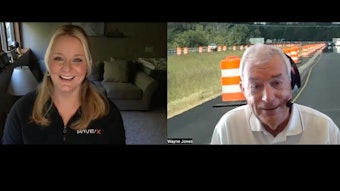
Many of you know that I am huge advocate of job costing and “knowing your numbers,” which is critical in estimating. But when managing a project and “juggling” the expectations of your client (or clients) comes into conflict with your estimate – well, let’s just say you could be juggling chain saws instead of oranges.
On a typical commercial project, you might have only one contact, but you might be leaving an impression or dealing with several more “clients” along the way: the owner, manager, and tenant to name a few.
At the end of the day, making the customer/check signer happy is key, but maintaining your reputation and managing expectations often goes beyond just that one person.
Unexpected Discovery
On a recent job of ours, we were initially dealing with a facility manager. This was the gentleman who asked for and received our estimate, who signed the contract, and who ultimately paid the bill.
But during the process the land owner became involved, as did another tenant who was affected by the construction. Obviously, our focus was on our check-signing client, but now that these others were involved, we knew we had to provide a level of service to make sure the landowner and tenant were happy with our work. We wanted to keep our reputation strong with all parties, regardless of who was “paying.”
In this case, we were tasked with reconstructing an area of heavy duty asphalt paving. We had to over-excavate old bad base material, re-install new base, then install new, thicker asphalt. Upon excavation we discovered unexpectedly several old concrete footings from a previous carport. A change order was agreed to, but on excavation what had appeared to be 2 ft. x 2 ft. blocks were actually 4 ft. x 4 ft. – and some were even larger (weighing in excess of 4,000 lbs.).
Clearly the scope changed, and another change order was needed. Our onsite equipment even had a challenge to pull them out, but we made it. The next challenge was disposing of them. We didn't want to damage our trucks or trailers, but obviously we had to figure something out. In the end, we hired a company that provided concrete washout pans that were capable of handling the heavy loads, so it made it a much easier process (at additional expense).
Unexpected Observers
I tell this story because during this whole process, not only did we have our client, the facility manager on site, but the landowner and the other involved tenant were on site observing as well.
Although not “paying” customers, there was certainly an expectation in their minds of what a good contractor should be and how a good contractor would handle such unexpected difficulties. And we wanted to exceed that. Why? Well, you never know who your next check signer will be.
It's this mentality that I feel has helped us in our growth over the years. Case in point: the property owner of this job has already contacted us about another job, and he clearly stated that it was our communication and professionalism on the reconstruction project that made him call us. He recognized that we had taken a large project, complicated by unexpected difficulties, pursued and justified the necessary change orders, all under the watchful eyes and added stress of the owner and neighbor tenant. And it all went smoothly and turned out well.
Communicating Each Step
What did we do differently from our normal approach to a job? Not much, but we were clear with all communication, every step of the way, even to those others not directly involved. We let everyone know the construction plans and next steps as we progressed. It was very simple looking back, but it was simple because that’s our approach on every job we do – and that approach often results in additional work (like the project we gained from this job).
I’m not saying you need to communicate all your intentions to the world, but communication is key, and once it’s ingrained in your day-to-day approach to business it’s not only easy, but the information that you can provide to everyone involved, even those not directly involved, will surely increase your professionalism.


























